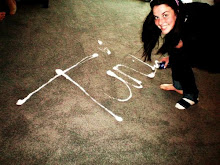When Holden got of at Penn Station, all he could think of doing was calling someone, anyone. New York was a lonely place for Holden, even though it was a big city, he couldn’t think of anyone to call, no one he could talk to. Everyone he wanted to talk to would end up getting him in trouble, in some round-about way, it just wasn’t worth the risk. Holden needed somewhere to stay for the night, he couldn’t go home, so he hailed a cab. Jason was on the 9th hour of his 13 hour shift and was not overly thrilled at picking a weird-looking, grey haired teenager up at this time of night, but he did anyway, he needed the money. Holden gave his home address, just on instinct, well he thought so anyway, even though home is the one place he really wanted to go. About 10 minutes into the journey Holden asked Jason to change direction, this didn't make Jason very happy, he thought Holden said it where he knew that he couldn’t, he thought he was dicking him around. Jason soon regretting picking Holden up in the first place, a typical teenager, asking stupid questions about ducks and changing his route in the middle of the trip. He would’ve kicked him out too, but he couldn’t, there was just this look in his eyes, he looked so sad, and alone. He felt bad for Holden, but when Holden asked him out for a drink, it was really too far, he tried to put him down as softly as possible. When they finally arrived at the Edmont hotel, Jason was glad to have Holden out of the car, but Holden couldn’t help feel like he had lost a friend.
Holden made his way up to his room, with help from Melvin, the sixty-five year old bellboy. When he got there he just sat down and looked out the window. Looked at all the people in the other hotel, enjoying themselves and doing what they really want to do. Across the road in another hotel were a young couple spitting water over each other, Holden didn’t understand why they were, but it just made him feel lonely, and at one point he almost invited Stradler over for company. That thought passed his mind quickly though, when he realised that wasn’t the kind of company he wanted. Although Holden didn’t understand the act of sex, he still knew that it’s something everyone at his age did, it was normal. Holden decided to call Faith Cavendish, she wasn’t exactly a whore but she wouldn’t be to angry at him calling to talk late at night, he figured she’d be used to it. When faith picked up the phone, it defiantly wasn’t what Holden was expecting, she didn’t sound happy to hear him at all. It was obvious that Holden had woken her up, and she made it obvious she wasn’t impressed, Holden tried talking about Eddie, trying to start up a conversation so they could go out. Faith knew Holden wasn’t as old as he was making himself sound, but she remembered what it was like to be a teen, she knew he was just trying to act older. There was no harm in going out for a drink, Faith knew he wouldn’t try anything, Holden just didn’t sound like that type of guy, he sounded like a child, and if he was paying, Faith wasn’t going to complain. As the idea of free drinks grew on Faith, Holden backed out and hung up the phone. “Who was that?” Faith’s sick roommate calls out from her room, “Some kid woke me up at this hour and then doesn’t even end up buying me a drink, typical.”
After Holden hung up the phone he went back to his loneliness, with his only company the water-spitting couple and a cross-dressing man across the street.
